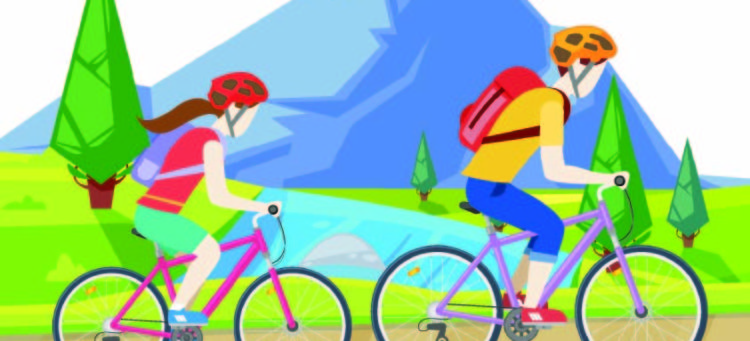
The 8s
Cycling Tip & Rules: Dust off your saddle and gear up for an active summer with the kids
May, 2019
Drop the kids off at soccer; sit in the bleachers during hockey practice—there are few activities that allow kids and parents to get outdoors and get active together. Biking is one activity that the whole family can participate in, whether getting active is as much a part of the regular routine as brushing your teeth, or a relatively new endeavour. With the help of Andrew Phelps of Cranky’s Bike Shop, we’ve put together eight tips to get your family’s summer of cycling on the right track and make a season of family adventure as easy as riding a bike.
1. Get a tune-up
A lot can happen in the five months your bike hibernates in the shed or garage. So get in the habit of taking your bikes in at the beginning of the season for a basic tune-up. A bike mechanic will give each one a good once-over, checking for any issues with the brakes, gears and frame, as well as tire pressure, which Phelps notes is probably the most important part. Deflated tires have almost no grip and can easily roll off the rim, turning a leisurely ride into a trip to the ER.
2. Check your head gear
In St. Albert, it’s required that all cyclists wear helmets, however, a safe noggin isn’t guaranteed by simply buckling up. Before you hit the trails this season, check your helmets for signs of wear and tear—like cracks in the shell or worn out Styrofoam—and replace them accordingly. Elements like sun and rain also have an impact on your helmet’s lifespan. Phelps recommends casual riders replace their helmets every five years, even if there are no signs of wear and tear, while frequent riders should replace them every three.
3. Get the right fit
When it comes to buying bikes for growing kids, the bigger the size, the longer it will last. But how big can you safely go? Phelps recommends keeping an eye on both the height of the bike and your child’s reach. Children should be able to touch the ground while seated, and comfortably straddle the frame when they hop off the seat. And keep in mind that as bikes get taller, they get longer too. So make sure your youngster can easily steer without having to reach too much.
4. Go tandem
Tandem bike attachments are increasingly popular with avid cyclists who want to include kids on longer rides. A tandem bike attachment, like those made by Trail-A-Bike, transforms a traditional mountain bike into a bicycle built for two, allowing little ones to ease up on pedaling without getting left behind. Most tandem bike attachments are sized for kids between 4–7, but regardless of age, children riding must be able to touch the pedals and comfortably hold on for the duration of the ride, even if they decide to give their legs a break.
5. Plan your route
While kicking off and seeing where the wind blows you can be fun for older riders, having a destination in mind will help keep young kids willing to pedal—particularly if that destination promises a frozen treat. You can map out your route using the city’s website, which outlines the 95 km of paved trails that connect parks, neighbourhoods and the river valley. Or, for families looking to take their cycling off the beaten path, trailforks.com catalogues mountain bike trails across North America based on factors like difficulty and distance.
6. Stay hydrated
Cycling is hard work—especially for little ones just getting used to pedaling beyond the front sidewalk. Fuel up on water and healthy, energizing snacks throughout the ride to keep energy levels and spirits high. Equip all bikes with a bottle cage so kids have access to water as needed, and take frequent breaks to let everyone rehydrate.
7. Adapt
Cyclists of all ages are welcome to share the sidewalk with pedestrians, while mature riders can choose the streets if they want. However, all must abide by the laws and etiquette of the space they choose to ride on. Riders pedaling on the road must obey all street signs and rules—think red lights, stop signs, and using hand signals when you turn—while cyclists who take to the sidewalks must dismount at crosswalks, and should be equipped with a bell to warn pedestrians as they approach.
8. Join a club
Local bike shops like Cranky’s offer a variety of clubs for adult cyclists and older kids dedicated to weekly rides. Aside from providing a friendly wheel to follow, clubs can be a wealth of information,with members sharing favourite routes, mechanical tips and techniques. Kid-centered clubs like Sprockids and Pedalheads are great resources for young riders to learn about safety, cycling etiquette and riding skills in an interactive group setting.












